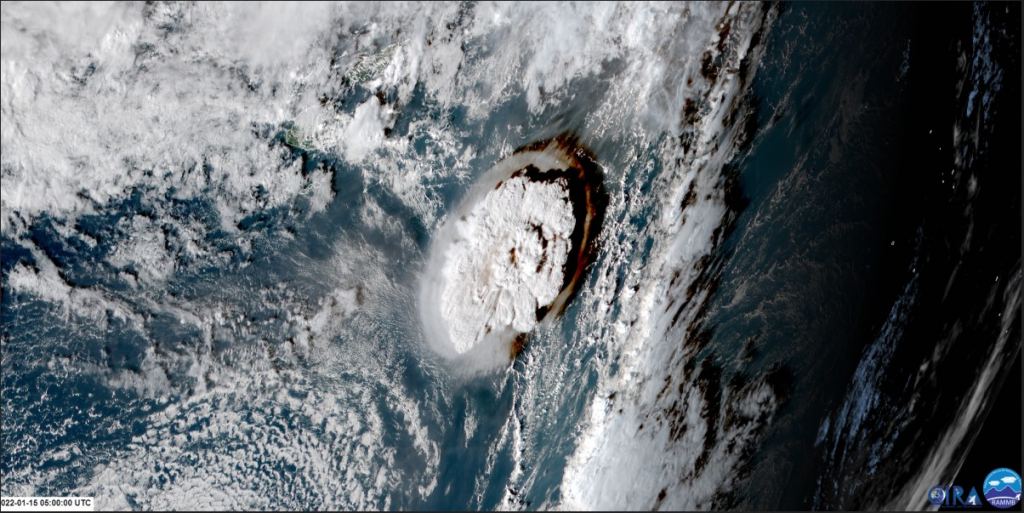The Tonga Eruption Produced a 90-Meter Tsunami
By Paul M. Sutter
The gigantic underwater Tonga volcano eruption event captured the world’s attention in January of this year. People from around the world marveled at the satellite imagery of this awesome demonstration of nature’s destructive capability. But only now are we learning that the volcano triggered something else – a tsunami wave up to 90m tall, nine times higher than the tsunamis generated by earthquakes.
Researchers centered at the University of Bath used a combination of sea level oscillations, atmospheric observations, and computer simulations validated by real-world data to come to the conclusion about the size of the tsunami generated by the Tonga eruption.
They found that there were two drivers of the enormous tsunami wave. The first driver of the tsunami was a series of atmospheric pressure waves that encircled the globe and pushed water with them. This was followed an hour later by a wave generated by the displacement of water from the underwater eruption itself.
This one-two punch created a tsunami wave that was initially up to 90 meters high, which is almost as tall as the Statue of Liberty. Thankfully the Tonga volcano was far enough away from land that this tsunami did not have more serious impacts. That said, sea level rises were recorded in coastlines around the world after the event, and five people tragically died from the tsunami.
Dr. Mohammad Heidarzadeh, Secretary-General of the International Tsunami Commission and a senior lecturer in the University of Bath’s Department of Architecture & Civil Engineering, said, “The Tongan tsunami tragically killed five people and caused large scale destruction, but its effects could have been even greater had the volcano been located closer to human communities. The volcano is located approximately 70 km from the Tongan capital Nuku’alofa – this distance significantly minimized its destructive power.”
The seriousness of this potential for catastrophe alarmed the researchers, who say that we need to update our monitoring and warning systems for tsunamis. “This was a gigantic, unique event and one that highlights that internationally we must invest in improving systems to detect volcanic tsunamis as these are currently around 30 years behind the systems we used to monitor for earthquakes. We are under-prepared for volcanic tsunamis,” said Heidarzadeh.
Our current warning systems are fine-tuned for earthquake-based tsunamis, which are the most common trigger for these large waves. These systems sense the beginnings of a tsunami by monitoring sea level changes. But because the tsunami generated by the Tonga event was mostly driven by changes in air pressure, these systems did not pick it up.
Dr Aditya Gusman, Tsunami Modeller at the New Zealand-based geoscience service, said, “The 2018 Anak Krakatau volcano and 2022 Hunga Tonga-Hunga Ha’apai volcano eruptions clearly showed us that coastal areas surrounding volcano islands are at risk of being hit by destructive tsunamis. Although it may be preferable to have low-lying coastal areas completely clear from residential buildings, such a policy may not be practical for some places as volcanic tsunamis can be considered infrequent events.”
Co-author Dr Jadranka Šepi?, from the University of Split, Croatia, added, “What is important is to have efficient warning systems, which include both real-time warnings and education on what to do in a case of a tsunami or warning – such systems save lives. In addition, at volcanic areas, monitoring of volcanic activity should be organized, and more high-quality research into volcanic eruptions and areas at hazard is always a good idea.”
The post The Tonga Eruption Produced a 90-Meter Tsunami appeared first on Universe Today.

September 15, 2022 at 01:26AM
via Universe Today read more...

Post a Comment